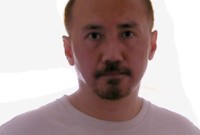The Quickening Maze by Adam Foulds
 The Quickening Maze by Adam Foulds
The Quickening Maze by Adam Foulds
My rating: 5 of 5 stars
Adam Foulds’s first book of fiction The Truth About These Strange Times garnered very favorable reviews, and won the Betty Trask Award 2007. This second one, The Quickening Maze is just as successful, even more so when it got shortlisted for the Booker.
It is a historical fiction, just like his other shortlisted Booker candidate Hilary Mantel’s Wolf Hall. But, unlike it, it is shorter, about a quarter of the length. But, like that booker winner again, the writing is exquisite. Just look at these two examples:
Small birds, tit mice … flew off together in a pretty wave of magic.
The thick leaves purred and bounced under sparkling strings of water
They could just fit right into a poem. Which is not unusual, because first and foremost Foulds is a poet, and a prize-winning one, at that. He won the 2009 Costa poetry award for The Broken Word, a narrative about the Mau Mau uprising, in poems.
Again, another comparison with Wolf Hall: his sentences are just as short and pithy. It is as if these two writers have modernized the historical written style while making it relevant to the feel and the mood of those periods. While Wolf Hall’s period is way older, Foulds’s is the 19th century. However, do not presume that this is Fould’s written style. If you read his other book, you’d find the style there quite different, very modern and contemporary.
The story of The Quickening Maze concerns mainly the famous John Clare, a pastoral poet. He is kept in a mental hospital High Beach run by one Matthew Allen. We also meet another famous poet Alfred Tennyson, on whom the doctor’s teenage daughter Hannah has set her sights. Unfortunately, he is short-sighted and vain enough to not wear glasses. He is in - or near - the asylum because of his brother Septimus, the true patient.
As an institution, High Beach can be deemed quite opened or lax - John is able to venture out into the nearby woods. There he happily consorts with the gypsies, who poach the forest’s game. Only when he returns looking the worse for wear after a boxing match that the rules are tightened and he is locked up, for his own safety. Throughout the book we are shown instances of Clare’s worsening mental state: he sometimes thinks he’s Byron, or even Shakespeare, or a boxer Jack Randall.
At times when the story leaves Clare, we see what else is going on in the institution. The doctor Matthew has ideas for a machine that can carve wooden patterns. He solicits capital from Tennyson, who foolishly agrees to contribute. When things sour, the family has to sell of the furniture and other belongings, to pay for debts.
We also see another ugly side of the place. One of the keepers abuses the patients, taking sexual advantage of a female who thinks she is Mary of the Bible. Clare discovers him one day, and threatens to expose him to the doctor, but he is beaten for this. In the end, John is rid of the place when he takes a final outing into the forest with an intent to walk all the way back home, up into north, to his wife, and to Mary, whom he believes is still alive.
This is a very well-written book, with a good pacing of the various stories, of John Clare, Hannah, Tennyson, and the doctor. Definitely re-readable, if only to savour again the poetic feel of the writing.
View all my reviews >>





















